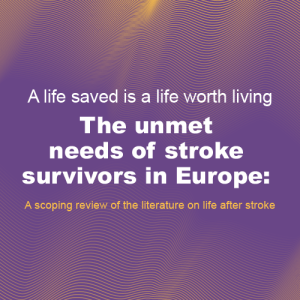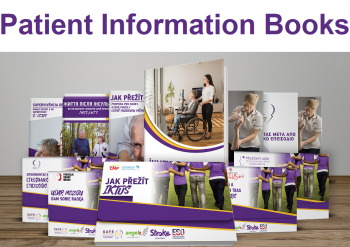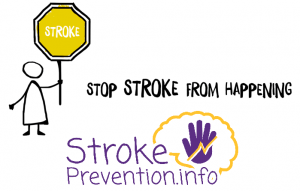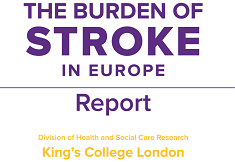
Nov 15, 2018
Published first on ScienceDaily.com
Exposure to environmental noise appears to increase the risk of heart attacks and strokes by fueling the activity of a brain region involved in stress response. This response in turn promotes blood vessel inflammation, according to preliminary research to be presented in Chicago at the American Heart Association’s Scientific Sessions 2018, a premier global exchange of the latest advances in cardiovascular science for researchers and clinicians.
The findings reveal that people with the highest levels of chronic noise exposure — such as highway and airport noise — had an increased risk of suffering cardiovascular events such as heart attacks and strokes, regardless of other risk factors known to increase cardiovascular risk.
The results of the study offer much-needed insight into the biological mechanisms of the well-known, but poorly understood, interplay between cardiovascular disease and chronic noise exposure, researchers said.
“A growing body of research reveals an association between ambient noise and cardiovascular disease, but the physiological mechanisms behind it have remained unclear,” said study author Azar Radfar, M.D., Ph.D., a research fellow at the Massachusetts General Hospital in Boston. “We believe our findings offer an important insight into the biology behind this phenomenon.”
Researchers analyzed the association between noise exposure and major cardiovascular events, such as heart attacks and strokes, among 499 people (average age 56 years), who had simultaneous PET and CT scan imaging of their brains and blood vessels. Diagnostic validation was done in a subset of 281 subjects.
All participants were free of cardiovascular illness and cancer at baseline. Using those images, the scientists assessed the activity of the amygdala — an area of the brain involved in stress regulation and emotional responses, among other functions. To capture cardiovascular risk, the researchers examined the participants’ medical records following the initial imaging studies. Of the 499 participants, 40 experienced a cardiovascular event (e.g., heart attack or stroke) in the five years following the initial testing.
To gauge noise exposure, the researchers used participants’ home addresses and derived noise level estimates from the Department of Transportation’s Aviation and Highway Noise Map.
People with the highest levels of noise exposure had higher levels of amygdalar activity and more inflammation in their arteries. Notably, these people also had a greater than three-fold risk of suffering a heart attack or a stroke and other major cardiovascular events, compared with people who had lower levels of noise exposure. That risk remained elevated even after the researchers accounted for other cardiovascular and environmental risk factors, including air pollution, high cholesterol, smoking and diabetes.
Additional analysis revealed that high levels of amygdalar activity appears to unleash a pathway that fuels cardiac risk by driving blood vessel inflammation, a well-known risk factor for cardiovascular disease.
The researchers caution that more research is needed to determine whether reduction in noise exposure could meaningfully lower cardiovascular risk and reduce the number of cardiovascular events on a population-wide scale.
In the meantime, however, the new study findings should propel clinicians to consider chronic exposure to high levels of ambient noise as an independent risk factor for cardiovascular disease.
“Patients and their physicians should consider chronic noise exposure when assessing cardiovascular risk and may wish to take steps to minimize or mitigate such chronic exposure,” Radfar said.
Story Source:American Heart Association. “Chronic exposure to excess noise may increase risk for heart disease, stroke.” ScienceDaily. ScienceDaily, 5 November 2018. <www.sciencedaily.com/releases/2018/11/181105081749.htm>.

Nov 6, 2018
Published first on ScienceDaily.com
One of Australia’s biggest health issues could be checked if more people took up yoga or tai chi and reduced their blood pressure, an Australian study has found.
Stroke costs the country $5 billion a year through treatment and loss of productivity, affecting 56,000 Australians in 2017, equivalent to one stroke every nine minutes.
A paper published in Future Neurology by researchers from Monash University, the University of South Australia (UniSA) and the University of Melbourne shows the impact that mindfulness-based interventions (MBIs) such as yoga and tai chi can have on reducing hypertension, fatty acids and blood sugar levels — all risk factors for stroke.
Researchers say both Eastern practices have the potential to mitigate stroke risk as well as help support stroke survivors.
UniSA Senior Lecturer in Human Movement, Dr Maarten Immink, says physical activity plays an important role in preventing recurrent stroke but many stroke survivors may have limited mobility.
“This is where yoga and tai chi are so helpful. They are gentle, movement-based MBIs which help people focus — a state of mind which stroke survivors often lose — and be active at the same time,” Dr Immink says.
The researchers analysed 26 studies published between 1985 and 2017 which examined how yoga and tai chi moderated key stroke risk factors, including blood pressure, cholesterol, diabetes, atrial fibrillation, smoking and alcohol consumption, obesity, anxiety and depression.
UniSA Dean of Health Research, Professor Susan Hillier, says there is increasing evidence that MBIs can be an effective and noninvasive way of reducing hypertension — the biggest stroke risk factor.
“Some evidence suggests that MBIs such as yoga and tai chi regulate blood pressure by teaching people to breathe deeply, balancing and stabilising their autonomic nervous system and lowering their heart rate,” Prof Hillier says.
The stroke specialist says nearly one third of adults around the world suffer from high blood pressure, with 23 million additional strokes projected in the next 12 years.
“Survivors of stroke are at an increased risk of another one — 43 per cent likely within 10 years, 32 per cent within five years and 16 per cent within one year — so it is important we find interventions to help reduce the major risk factors,” she says.
Apart from reducing blood pressure, the research shows that MBIs can help improve diabetics’ health by increasing blood and oxygen supply to the tissues, helping to produce insulin, and boosting anti-oxidants.
Story Source: University of South Australia. “Stroke survivors and those at risk urged to focus on yoga and tai chi.” ScienceDaily. ScienceDaily, 5 November 2018. <www.sciencedaily.com/releases/2018/11/181105105417.htm>.

Nov 3, 2018
Published first on ScienceDaily.com
About 6 million Australians aged 18 years and over have high blood pressure. Of these, more than two thirds had uncontrolled or unmanaged high blood pressure (not taking medication), representing 4 million adult Australians.
High blood pressure, or hypertension, is suggested to be one of the leading risk factors for heart disease.
The process in which high blood pressure causes heart disease is not completely understood.
But now scientists at the Baker Heart and Diabetes Institute have found that high blood pressure caused by specific signalling from the brain promotes heart disease by altering stem cells with the bone marrow.
The results, published in Haematologica demonstrate how an overactive sympathetic nervous system that causes elevated blood pressure can instruct bone marrow stem cells to produce more white blood cells that clog up blood vessels.
The Baker Institute’s Head of Haematopoiesis and Leukocyte Biology, Associate Professor Andrew Murphy says the findings represent a new era of heart disease research.
“Hypertension is a major, independent risk factor of atherosclerotic cardiovascular disease, but we need more information to determine how it is resulting in heart attacks and strokes,” said Associate Professor Murphy.
Atherosclerotic cardiovascular disease is a build-up of cholesterol plaque in the walls of arteries, causing obstruction of blood flow.
“We now know that significance changes in the immune system contributes significantly to heart disease,” he said. “We aimed to determine how the sympathetic nervous system through the brain directly promotes atherosclerosis in the setting of hypertension.”
“We have discovered that this form of high blood pressure, often associated with stress, causes changes within the bone marrow leading to increased white blood cells circulating though our vessels. This is significant as the general view of hypertension is that it is mainly a disease of the blood vessels, which means other heart damaging events are missed.”
The team is now exploring the specific molecules involved, which may shed light as to why some current therapies are ineffective. They also suggest that managing stress, anxiety and pain are likely to help in controlling this form of hypertension and the effects it has on the body’s bone marrow stem cells.
Story Source: Baker Heart and Diabetes Institute. “Dangerous blood pressure caused by specific signalling in the brain.” ScienceDaily. ScienceDaily, 1 November 2018. <www.sciencedaily.com/releases/2018/11/181101085147.htm>.

Oct 14, 2018
The story first appeared on ScienceDaily.com
New findings suggest that diet is a major contributor for the increased risk of hypertension in black compared to white Americans. The results, published in the Journal of the American Medical Association, are part of the Reasons for Geographic and Racial Differences in Stroke (REGARDS) study, which looks at the incidence of stroke in approximately 30,000 individuals. The study is funded by the National Institute of Neurological Disorders and Stroke (NINDS), a part of the National Institutes of Health.
“This study addresses a lead cause of racial disparity in mortality and identifies potential lifestyle changes that could reduce racial disparities in both stroke and heart disease,” said Claudia Moy, Ph.D., NINDS program director and one of the study authors.
In the study, led by George Howard, Dr.P.H., a biostatistics professor at the University of Alabama at Birmingham, researchers studied individuals over the age of 45 over a period of 10 years and looked to identify risk factors associated with the higher likelihood of developing high blood pressure in the study participants.
“The majority of disparities we see in the health of black versus white Americans are cardiovascular in nature,” said Dr. Howard, “and of these, all are tied to an increase in high blood pressure.”
For both men and women, a diet composed of high amounts of fried and processed foods and sweetened beverages was the greatest factor associated with why blacks are at a greater risk of developing high blood pressure compared to whites. For both men and women, other important factors included salt intake and education level. For women, additional factors contributing to the racial difference in high blood pressure included obesity and waist size.
“One of the main factors affecting the difference between the black and white population is cardiovascular disease, and the increased risk of high blood pressure among black Americans could help explain why their life expectancy is four years shorter than that of whites,” said Dr. Howard. “Understanding how we can prevent this increased risk of hypertension in blacks is critical for reducing health disparities among the black population.”
The researchers hope that these findings could be applied to reduce the prevalence of hypertension and thus the risk of stroke and heart attack in the black American population. This study suggests that lifestyle changes, particularly changes in diet, could help reduce the disparities seen in black versus white Americans.
“The best way to treat high blood pressure is to prevent it from occurring in the first place,” said Dr. Howard.
The REGARDS study includes more than 30,000 black and white Americans, approximately half of whom live in the Stroke Belt, an area in the southeastern United States where the rate of stroke mortality is higher than the rest of the country. Of these, 6,897 participants, 1,807 black and 5,090 white, were analyzed for this study.
In 2016, the NINDS launched a stroke prevention campaign called Mind Your Risks, which is designed to educate people aged 45-65 about the link between uncontrolled high blood pressure and the risk of having a stroke or developing dementia later in life.
Story Source: NIH/National Institute of Neurological Disorders and Stroke. “Diet rich in fried and processed foods linked to increased hypertension in black Americans: Study suggests a change in diet could mitigate increased risk for stroke.” ScienceDaily. ScienceDaily, 3 October 2018. <www.sciencedaily.com/releases/2018/10/181003193936.htm>.

Sep 28, 2018
First appeared on ScienceDaily.com
A novel therapy technique invented by researchers at The University of Texas at Dallas has been shown in a pilot study to double the rate of upper limb recovery in stroke patients, a leap forward in treating the nearly 800,000 Americans who suffer strokes each year.
The results of the study, funded by UT Dallas spinoff company MicroTransponder of Austin, Texas, were published Sept. 27 in the journal Stroke.
The findings indicate that targeted plasticity therapy — which involves stimulation of the vagus nerve — paired with traditional motor-skill rehabilitation is not only safe, but also twice as effective as rehab alone.
Dr. Jane Wigginton, the chief medical officer at UT Dallas’ Texas Biomedical Device Center (TxBDC) and an associate professor of emergency medicine at UT Southwestern Medical Center, led the Dallas site of the clinical trial, which involved 17 people across the country who had suffered a stroke.
“Stroke is too common and too debilitating for us to tolerate the status quo,” Wigginton said. “Patients need a real solution so they can get back to fully living their lives.”
Dr. Michael Kilgard, associate director and chief science officer of the TxBDC, invented targeted plasticity therapy (TPT). Kilgard, who is also the Margaret Fonde Jonsson Professor in the School of Behavioral and Brain Sciences (BBS), said the study results further validate the theories that he and his colleagues based their TPT work on beginning in 2009.
“We set out to design an approach that could transform long-term care and restore quality of life to patients for whom that has thus far been impossible,” said Kilgard, who was not involved in the clinical trial. “These results show our method has immense potential. We’re excited about what this could mean for millions of stroke patients worldwide.”
Researchers affiliated with the TxBDC and BBS developed the therapy technique, which pairs physical movements with precisely timed vagus nerve stimulation (VNS) — electrical stimulus of the nerve via a device implanted on the nerve in the neck.
The vagus nerve controls the parasympathetic nervous system, overseeing many unconscious functions such as circulation and digestion. Stimulating the nerve initiates neural plasticity — reorganization of the brain’s circuitry. The idea behind TPT is that synchronizing VNS with movement accelerates plasticity in a damaged brain, and with it, recovery.
A stroke occurs when blood flow to the brain is interrupted because of a blockage or a ruptured blood vessel. Limb mobility can be affected when nerve cells are damaged. Such forms of brain trauma are often treated with rehabilitation that includes repeated movement of the affected limb in an effort to regain motor skills. The approach is thought to work by helping the brain reorganize.
Several studies of Kilgard’s technique in animal models have previously demonstrated that it is effective in recovering limb function after stroke. A small clinical trial in Europe also provided encouraging data for its potential use in humans.
In 2009, UT Dallas licensed its VNS technique as a stroke and tinnitus treatment to MicroTransponder, which sponsored the new double-blind, placebo-controlled study. Neither the researchers nor the study subjects knew who was getting VNS stimulation and who was not.
Each study subject was a stroke patient whose stroke occurred between four months and five years prior to selection. After they had a VNS device implanted, the subjects received six weeks of in-clinic rehab followed by a home exercise program. About half were treated with active VNS while the rest received control VNS. All were assessed one, 30 and 90 days after therapy with a widely used, stroke-specific measure of performance impairment.
In addition to showing that the technique is safe, the researchers found that subjects receiving active VNS scored more than twice as high as control subjects at the 30- and 90-day intervals, opening the way for larger, more extensive clinical trials, Kilgard said. One such trial is in the recruitment phase and includes a study site in Dallas.
Story Source: University of Texas at Dallas. “Enhanced rehab for stroke doubles movement recovery.” ScienceDaily. ScienceDaily, 27 September 2018. <www.sciencedaily.com/releases/2018/09/180927083333.htm>.

Sep 20, 2018
The original article first published on ScienceDaily.com
One of the largest and longest-running efforts to evaluate the potential benefits of the Mediterranean-style diet in lowering risk of stroke found that the diet may be especially protective in women over 40 regardless of menopausal status or hormone replacement therapy, according to new research in the American Heart Association’s journal Stroke.
Researchers from the Universities of East Anglia, Aberdeen and Cambridge collaborated in this study using key components of a traditional Mediterranean-style diet including high intakes of fish, fruits and nuts, vegetables, cereal foods and potatoes and lower meat and dairy consumption.
Study participants (23,232 white adults, 40 to 77) were from the EPIC-Norfolk study, the United Kingdom Norfolk arm of the multicenter European Prospective Investigation into Cancer study. Over a 17-year period, researchers examined participants’ diets and compared stroke risk among four groups ranked highest to lowest by how closely they adhered to a Mediterranean style diet.
In participants, who most closely followed a Mediterranean-style diet, the reduced onset of stroke was:
- 17 percent in all adults;
- 22 percent in women; and
- 6 percent in men (which researchers said could have been due to chance).
“It is unclear why we found differences between women and men, but it could be that components of the diet may influence men differently than women,” said Ailsa A. Welch, Ph.D., study lead author and professor of nutritional epidemiology at the University of East Anglia, United Kingdom. “We are also aware that different sub-types of stroke may differ between genders. Our study was too small to test for this, but both possibilities deserve further study in the future.”
There was also a 13 percent overall reduced risk of stroke in participants already at high risk of cardiovascular disease across all four groups of the Mediterranean-diet scores. However, this was driven mainly by the associations in women who showed a 20 percent reduced stroke risk. This benefit appeared to be extended to people in low risk group although the possibility of chance finding cannot be ruled out completely.
“Our findings provide clinicians and the public with information regarding the potential benefit of eating a Mediterranean-style diet for stroke prevention, regardless of cardiovascular risk,” said Professor Phyo Myint, M.D., study co-author and former British Association of Stroke Physicians Executive Committee member, University of Aberdeen, Scotland.
“A healthy, balanced diet is important for everyone both young and old,” said Professor Ailsa Welch.
Researchers used seven-day diet diaries, which they said had not been done before in such a large population. Seven-day diaries are more precise than food-frequency questionnaires and participants write down everything they eat and drink over the period of a week.
“The American Heart Association recommends a heart-healthy and brain-healthy dietary pattern that includes a variety of fruits and vegetables, whole grains, low-fat dairy products, fish, poultry, beans, non-tropical vegetable oils and nuts and limits saturated fat, trans fat, sodium, red meat, sweets and sugar-sweetened beverages; this dietary pattern reduces risk factors and risk for heart disease and stroke, “said Eduardo Sanchez, M.D., MPH, the American Heart Association’s chief medical officer for prevention and chief of the Association’s Centers for Health Metrics and Evaluation, who was not a part of this study. “This study provides more evidence that supports AHA’s recommendation,” said Sanchez.
Story Source: American Heart Association. “Mediterranean-style diet may lower women’s stroke risk.” ScienceDaily. ScienceDaily, 20 September 2018. <www.sciencedaily.com/releases/2018/09/180920075854.htm>.












